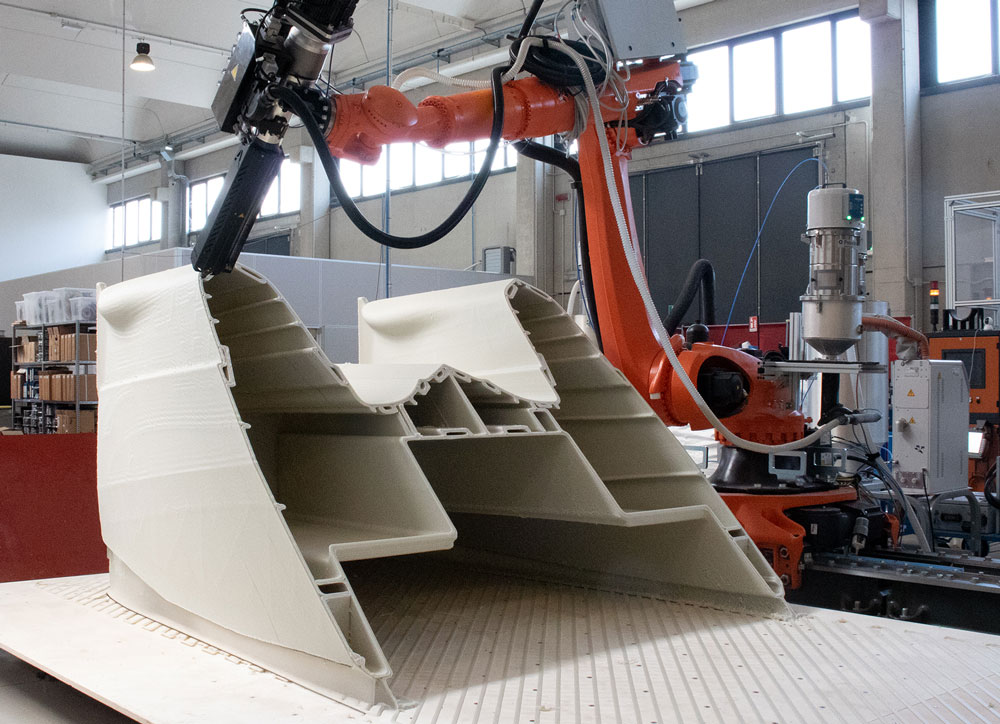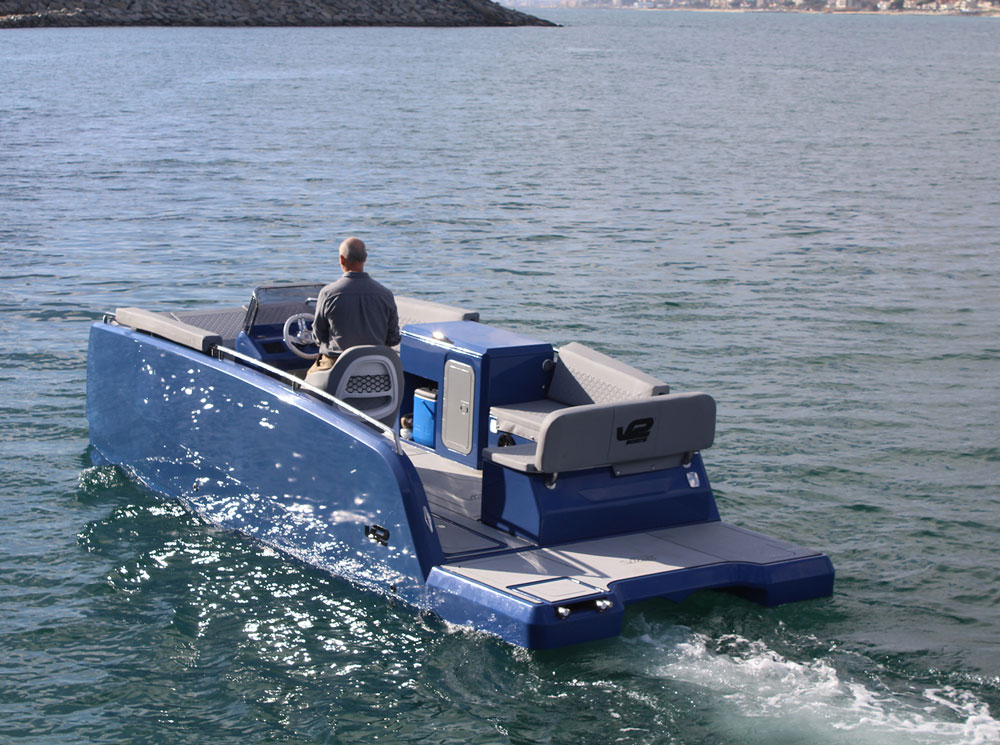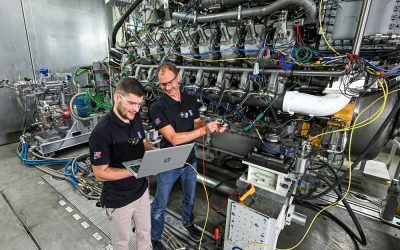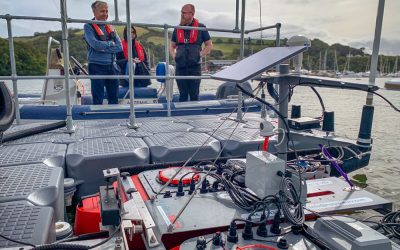A collaboration between Spanish engineering start-up V2 Group and Italy-headquartered 3D-printing specialist Caracol Additive Manufacturing (AM) has resulted in the production of a part-functional, 6m-long monolithic catamaran for open waters, produced entirely via robotic 3D-printing technology.
While whole 3D-printed boats are not entirely new, the models produced to date – including a 9m ferry unit built by Holland Shipyards Group, and the University of Maine’s 7.6m 3Dirigo – have tended to serve as prototypes or single-use demonstrators. The AM Cat developed by V2 Group and Caracol, however, is intended to not only sail offshore but to commercially compete with conventionally built leisure and recreational craft in the same size class.
Founded in Milan in 2017, Caracol has come to specialise in developing large-scale AM technology, integrating hardware, software and robotic arms to serve industries including aerospace, energy, railways and marine. Caracol describes its strategy as providing a turnkey solution for 3D printing, offering a package that includes robots, its own patented extrusion heads (used to melt and deposit the pellet material to create a 3D object, layer by layer), the material-feeding system and the software, as well as the systems required for control and automation. “Maritime was an unknown area to us when we started off, but it is also the area that has grown the most,” Violetta Nespolo, Caracol CMO, tells The Naval Architect.
The AM Cat was manufactured at Caracol’s facility over the course of 160 hours, “so in less than a week”, explains Marco Caso, software development manager at Caracol. The vessel was printed on Caracol’s Heron AM large-format additive manufacturing platform, which comprises: a high-throughput extrusion head; a 10m-long printing bed; and a robotic arm with more than six-axis manoeuvrability. The company used its own software to ‘slice’ the 3D model of the cat, supplied as a digital file, into horizontal layers. This data was then relayed to the printer, which used the info to build the boat layer by layer.

Production of the boat, using Caracol’s Heron AM set-up, took approximately 160 hours
The boat was 3D-printed using recycled polypropylene with glass fibre. “About 99% of the boat was produced in one single piece, including internal structure and supports of the hull, but we kept some of the smaller elements out,” says Caso. “Polypropylene was the material we chose, as it fit with the mechanical and chemical requirements, together with the client’s need for an economical material given the scale of the project. We know this material very well – we understand its parameters, and that’s important when you’re building something this big and complex.”
Raúl Gonzalo, a naval architect for 25 years and head of engineering at V2 Group, describes polypropylene as a “good, cost-efficient material”, and says: “We originally looked at glass fibre but agreed it was too early for this material, which is currently better suited to mass-production boats.” While glass fibre may create a more rigid finish than polypropylene, the latter material is still tough enough to withstand bad weather and harsh waves.
The AM Cat is engineered for pure-electric propulsion, featuring an 11kW drive motor from Dutch e-motor manufacturer Rim Drive Technology. It’s designed to be powered by four 200Ah, 48V batteries, delivering a total capacity of 40kWh. However, during testing, the AM Cat was fitted with smaller batteries, providing a combined 10kWh.
Performance evaluations by V2 Group and Caracol revealed that, with this 10kWh battery pack, a 10.3kW power input and three people on board, the AM Cat reached a top speed of 6.3knots and was capable of a range of four to five hours. “With the full 40kWh battery pack, the range is expected to increase fourfold,” says Gonzalo.
Gonzalo adds: “Normally, when we build a boat using traditional materials, we follow ISO standards, which provide a clear framework. However, if you switch to 3D-printed boats and apply scantling rules, it’s not as straightforward.
“The challenge arises when you start working with unfamiliar materials. Without optimised data for these materials, we have to rely on existing rules, which tend to be very conservative in defining load scenarios. This becomes an issue when dealing with 3D-printed materials, which often aren’t isotropic. This is because, as opposed to building a vessel in steel or wood, the 3D-printing process builds the material layer by layer, which can lead to differences in strength and stiffness. As a result, we’re basing our calculations on data that isn’t always reliable.”
For the full in-depth story, see the April issue of The Naval Architect




